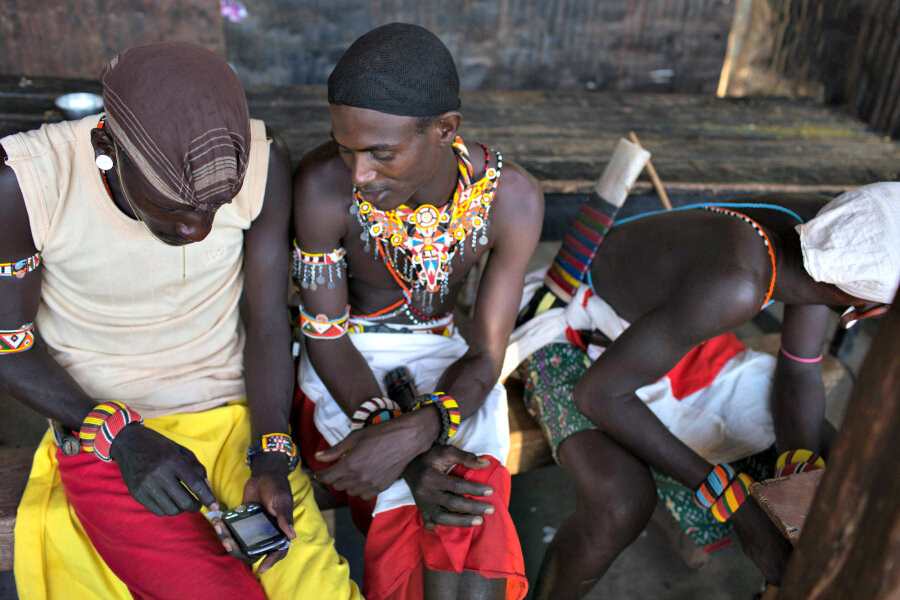Four projects that zero in on four big world problems
Loading...
In Burundi, simple wire drying racks are helping raise families out of poverty. Meanwhile, rural children in Kenya are learning through lessons and tests sent to their mobile phones.These are just two examples of projects already addressing the challenges raised by the Bill and Melinda Gates Foundation in its 2015 annual letter.
This year, the Gates Foundation is looking to tackle four monumental tasks by 2030: slash infant mortality in half, ensure Africa feeds itself, harness mobile banking to improve the lives of the poor, and use software to revolutionize learning.
The foundation, worth $42.3 billion, is no stranger to ambitious goals. Last year, it aimed to take down three persistent myths surrounding poverty and development, using “Science Guy” Bill Nye to talk through the data. The year before, the foundation spent $3.6 billion towards global development and health.
While the annual Gates letter describing the new year's goals always makes headlines, plenty of entrepreneurs and organizations have long been working in those sectors and have dreamed up interesting solutions to these problems.
We found four projects making waves in the four priorities that this year's Gates letter highlights. Two were culled from the Forbes 30 under 30 list, one is a Dyson award winner, and the last is a great example of a simple yet effective innovation.
Child deaths will decrease and more diseases will be wiped out
The Gates letter calls for the child mortality rate to be cut in half from 9 million to 4.5 million children by 2030.
James Roberts, a young British inventor, has created an inexpensive, inflatable incubator that will make that goal much more achievable. The "MOM" was designed for children born in refugee camps where new moms don’t have good access to medical care. The MOM comes complete with a humidifier and even a phototherapy unit to treat jaundice, a common condition in premature babies. Roberts won the 2014 Dyson award for his cheap and practical incubator and hopes to deploy his creation to save lives in the developing world.
Africa will feed itself
Wire racks don’t seem like revolutionary tools to end poverty, but they’re changing lives in Burundi. The UN Food and Agriculture Organization provided wire racks for the mostly female fishers in Burundi. With the wire racks, the women were able to dry their fish nine times faster and protect their catches from wild animals. With the extra money from their increased production, the women are able to support their families and raise themselves out of poverty. There are some concerns about overfishing with the new productivity, but wire racks are proving that simple objects can make a world of difference if used creatively.
Mobile banking will transform the lives of the poor
Cameron Goldie-Scott, a Forbes 30 under 30 social entrepreneur for 2015, is hard at work building the software mobile banking depends on. His creation, Musoni, is a cloud-based software that makes it easier for microfinance organizations to manage loans and mobile money. Though software for microfinance may not sound like the sexiest of innovations, Musoni has already processed over 1 million transactions and has plans to expand to more countries.
Software will revolutionize learning
Kago Kagichiri, the founder of Eneza Education and another Forbes 30 under 30, believes that he can use non-smartphones to revolutionize education. Students can take quizzes in various subjects over basic mobile phones, and can even text topics to the service to get Wikipedia articles delivered straight to their phones, bypassing the need for an Internet connection. Kagichiri is currently working in Kenya, but hopes to expand his services to reach 2 million students in 2015.
The Gates letter and the accompanying press tour have put a spotlight on these issues and placed their bets on achieving these goals by 2030. That’s 15 years away, but the entrepreneurs highlighted show that small wins are happening every day.
Read the full Gates Foundation annual letter
• This article originally appeared at Global Envision, a blog published by Mercy Corps.





